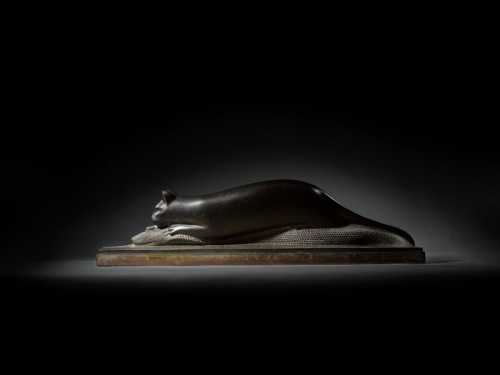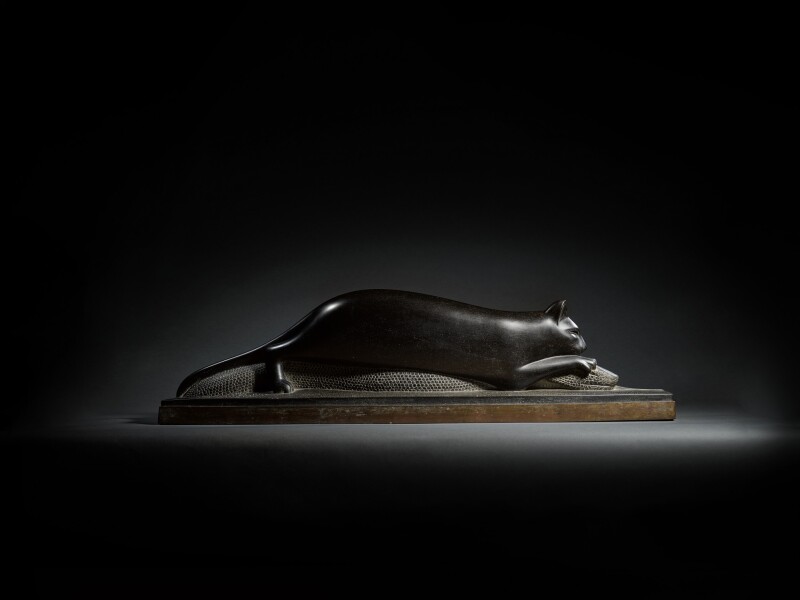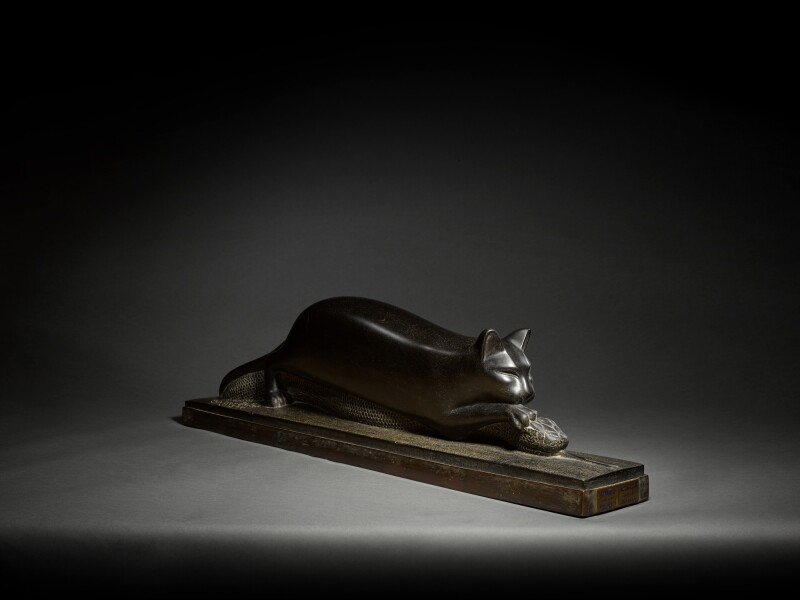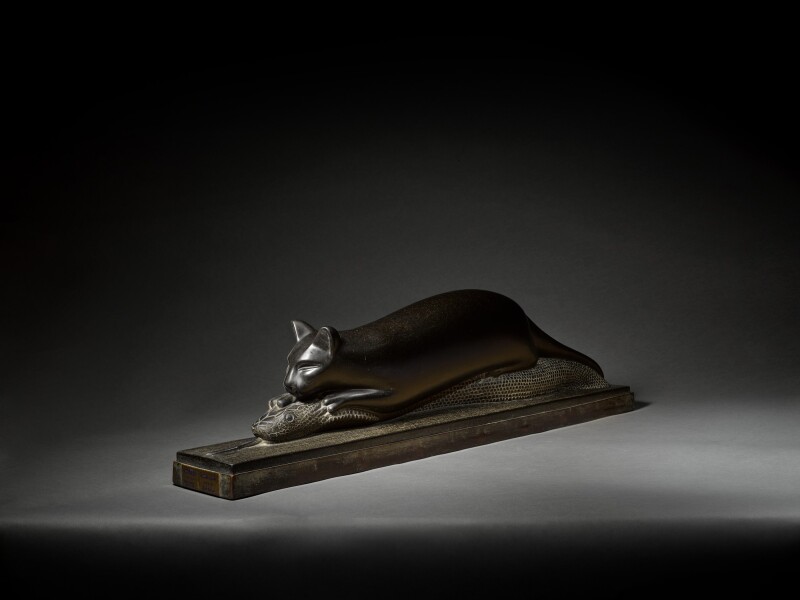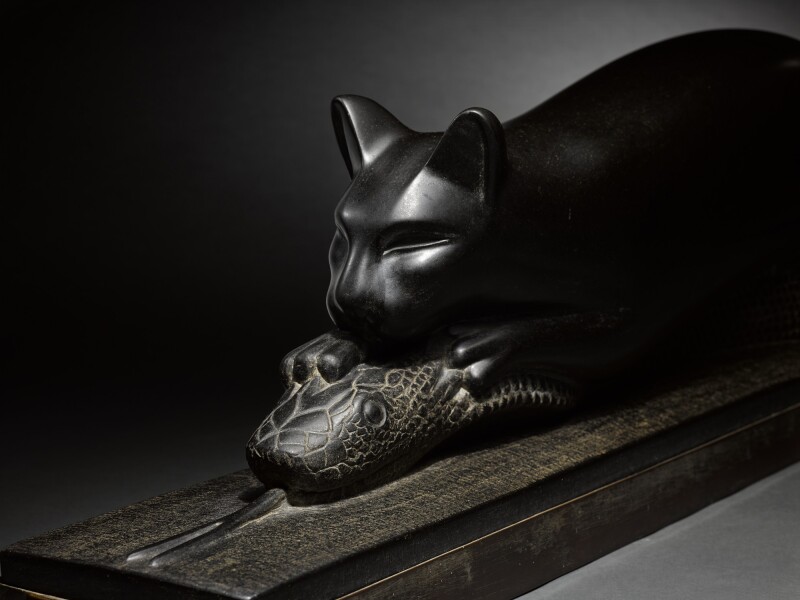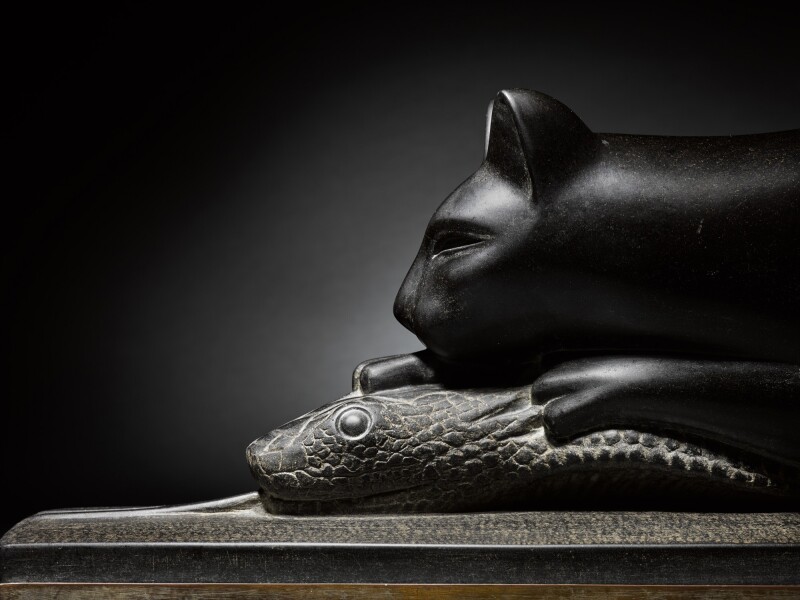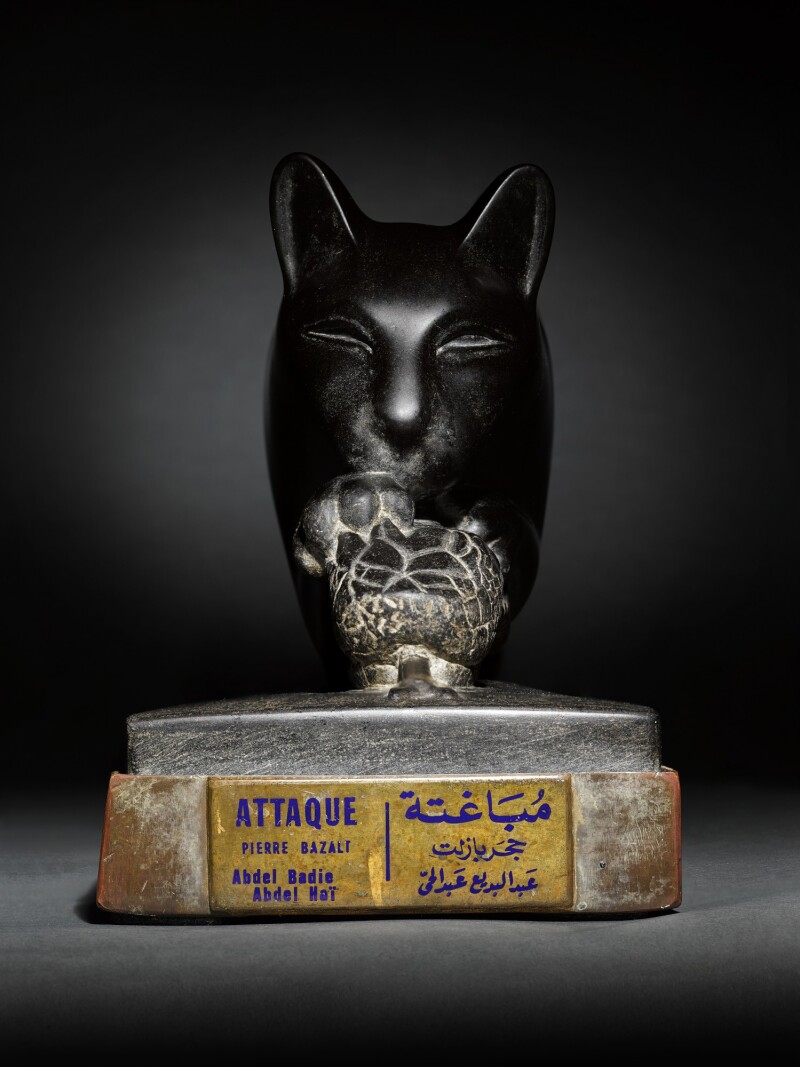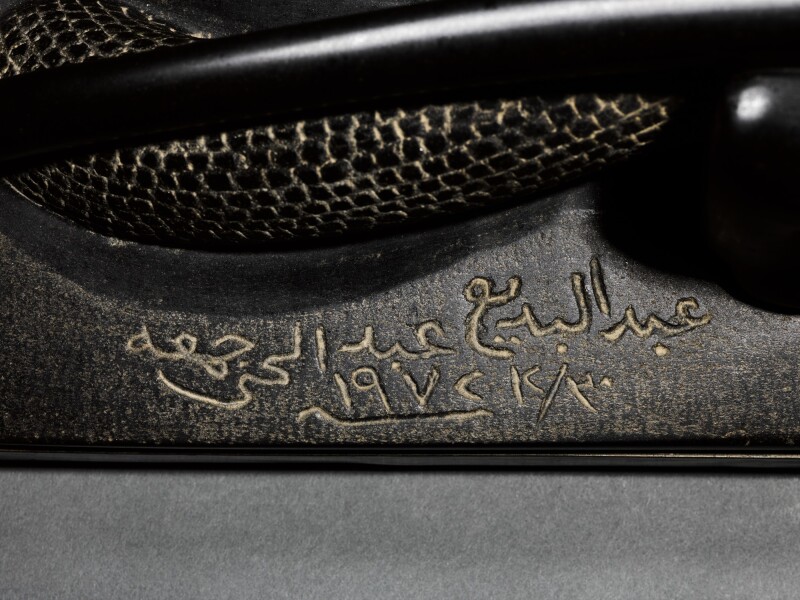- Mobaghata (Attack) 1972
- basalt stone
- Sculpture
- 110 * 15 * 29 cm
- signed and dated 1972
23 March 2022
Estimation
£90,000
118,655 USD
-
£110,000
145,023 USD
Realized Price
£107,100
141,200 USD
7.1%
Artwork Description
The Egyptian revolution of 1952, which saw the toppling of King Farouk and the instating of a nationalist government, inspired a profound artistic revival in the country. After years of British occupation, local artists felt compelled to produce accurate representations of life in Egypt as they witnessed it from the inside. However, sculptor Abdel Hay (1916-2004) took this quest to a superior level, through vibrant works executed in simplified yet extremely precise details.
The artist was working in the kitchen of a wealthy Egyptian family in 1941 when his employer, famous feminist and nationalist activist Hoda Shaarawi, spotted his talent for art. Under her patronage and mentorship, Abdel Bey started a fruitful artistic career, supported by formal studies but nonetheless characterized by an instinctive approach to his subjects and materials. He received prompt attention for his ability to carve hard inflexible stones into lifelike figures. Abdel Hay’s gift of seemingly breathing life into inert materials, coupled to his choice of focusing on ordinary, everyday subjects, were highly symbolic. This earned him immediate popularity both locally and worldwide.
Perpetuating the legacy of his teacher and mentor, famous Egyptian sculptor Mahmoud Mokhtar (1891-1945), Abdel Hay learned to infuse a quiet, yet compelling political strength in his sculptures. After winning the Mokhtar Sculpture competition in 1944, 1945 and 1948, he took part in many exhibitions around the Middle East and Europe. His modernist revisits of classical Egyptian themes and scenes earned him his government’s State Prize of Support in 1972 and Order of Sciences and Arts in 1982.

The feline creature carved on top of the present sculpture appears to be a cat. The important role which these animals played in Ancient Egyptian mythology is attested to by the multiple Goddesses associated with felines. One of the earliest was called Mafdet, who appears in the Texts of the Pyramids as killing a serpent using her claw, earning her the reputation of protection against snakes or scorpions. The serpent on the other hand is shown as the embodiment of Apep, the representation of Chaos. Another feline Goddess was Bastet, whose role as protector of cats also saw her defend the Sun-God Ra on his boat from Apep.
In the present sculpture, the opposition between the two animals is approached differently by Abdel Hay, who infuses the scene with a modernist conception of movement and structure. His minimalist modelling of the animal is reminiscent of Francois Pompon’s formal language of sculpting and Bugatti’s radical stylistic treatment of structure. Like other masters of the early twentieth century, Abdel Hay sought to reduce forms and volumes to their essentials, as an escape of the narrative tradition of sculpture. This statue of a cat dominating a snake, entitled “Attack”, is not descriptive, nor does it relate a popular story - it is a statement, that of the triumph of his people over the world’s surrounding chaos.
More lots by Abdel Badie Abdel Hay
No artworks
Realized Price
141,200 USD
Min Estimate
118,655 USD
Max Estimate
145,023 USD
Average Artwork Worth
+7.1%
Average Growth of Artwork Worth
Sales Performance Against Estimates
